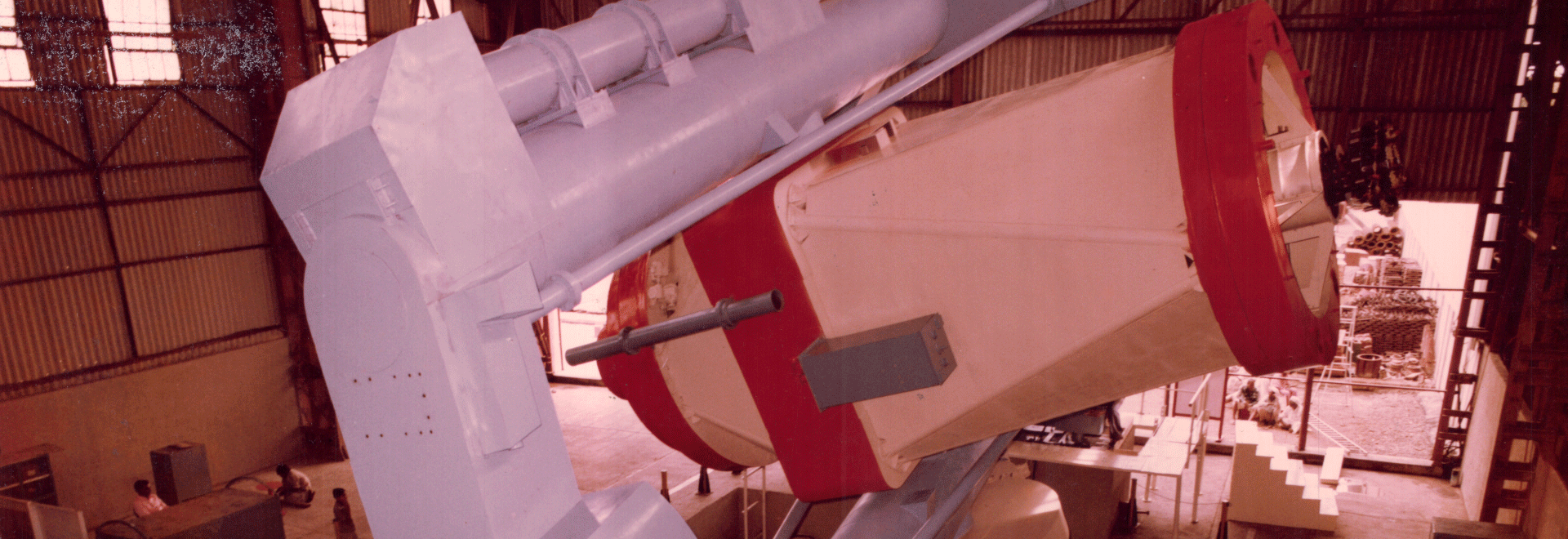
Sectors
Infrastructure
Services
Design & Engineering, Project Management and Safety, Digital and Advanced Technologies
Location
Tamil Nadu, India
The TCE team successfully designed and engineered India’s landmark achievement – the first indigenously built 2.3 m Optical Telescope for the Indian Institute of Astrophysics at Kavalur. This remarkable telescope stands as the largest optical telescope in Asia, featuring a primary mirror with a diameter of 2360 mm.
Distinguished by its versatility, the telescope is equipped with three focal planes: Prime Focus, Cassegrain Focus, and Coude Focus. The inclusion of a TV guiding system at the prime focus enables remote control of observations through an online computer, enhancing the efficiency and accessibility of astronomical research.
The telescope’s design incorporates an equatorial mount with a horseshoe and yoke configuration, rotating on a set of hydrostatic bearings that form the polar axis. The horseshoe-shaped bearing surface is supported by hydrostatic bearings at the north end of the polar axis. Notably, the rotation of the telescope about the polar axis mirrors the Earth’s movement but in the opposite direction. Despite its substantial total mass of around 100 tonnes, the telescope executes this rotation smoothly and with precision.
To protect the telescope from external elements such as wind, dust, and rain, it is housed within an observatory building with a hemispherical steel dome. This protective structure ensures optimal conditions for accurate observations. Additionally, the observatory is equipped with two shutters that can be opened and closed using rope drives, providing controlled access for observation sessions.
The observatory’s dome, an impressive structure measuring 22 metres in diameter and weighing a substantial 250 tonnes, stands as a testament to engineering excellence. This massive dome is ingeniously supported by 40 spring-loaded wheel assemblies, which roll smoothly along a rail anchored atop the observatory tower, standing 22 metres above ground level.
© Tata Consulting Engineers Limited. All Rights Reserved | Site Credits:DV






